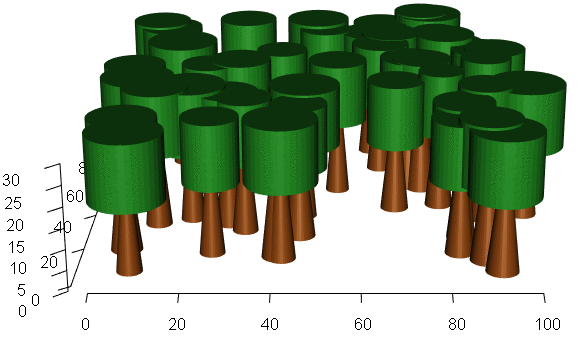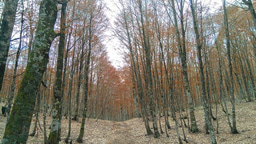When Models Start Watching: The Shift from Prediction to Monitoring
Published in Earth & Environment

Explore the Research
S1574954125004984?via%3Dihub?utm_campaign=related_content&utm_source=HEALTH&utm_medium=communities
In the era of climate change and rapidly evolving forest ecosystems, our traditional view of modelling often focuses exclusively on projections – what will happen in the future. But a recent article by Vangi and colleagues published in Ecological Informatics journal reminds us that models can and should play a vital role in monitoring today’s forests.
The study demonstrates how integrating a high-resolution simulation model (3D-CMCC-FEM) with real-time observational data enables continuous estimates (daily, monthly, yearly) of forest structure, biomass, carbon fluxes and state. This is a fundamental shift. Instead of relying solely on infrequent inventories or field surveys (which can have long delays and resource constraints), we can deploy modelling frameworks as operational tools for dynamic surveillance of our forested landscapes.
Why does this matter? First, forests cover roughly 40 % of the territory of the European Union and remain central in climate mitigation, biodiversity, and ecosystem services. Yet much of our information about their current state comes from periodic inventories – snapshots separated by several years – which leave blind-spots in between. What the new methodology offers is a more timely, spatially continuous picture of forest health, carbon uptake, structural change and resilience.
Second, from a modelling perspective, this underscores that models are not only “what‐if” machines, but also real‐time engines feeding monitoring systems. By assimilating observational data (remote sensing, field measurements) into process-based models, we can shift from static assessments to dynamic tracking. This dual role enhances the value of models in decision-support frameworks for forest management, climate adaptation, policy evaluation and bio-economy strategies.
Third, on the management side, this opens new pathways. Forest managers, policy makers and practitioners now have the opportunity to access near‐real‐time indicators of forest change: growth, mortality, carbon balance, and structural metrics. This allows rapid response to disturbances (e.g., droughts, pests, wind‐throw), better evaluation of management interventions, and more adaptive strategies aligned with changing climate and land use conditions.
In practical terms:
-
A forest modellers’ toolbox should integrate simulation, remote sensing, inventory data and data assimilation routines.
-
Monitoring frameworks can run operationally, producing time‐series of key forest variables rather than only endpoint estimates.
-
Management plans can be dynamic rather than static: adjusting interventions based on up‐to‐date conditions, not solely on the last inventory record.
-
Policy evaluation gains in robustness when change detection is continuous and model derived, not only retrospective.
The Vangi et al.'s article concludes that modelling “can exit from the experimental contexts” and become an operational tool for national-scale monitoring. It proposes further enhancement via updated soil data, species‐specific traits, and management regimes – thus increasing precision and applicability. Importantly, this is not about replacing field work, but augmenting it with a continuous monitoring layer.
As someone working in forest ecosystem modelling, this perspective resonates deeply: the “monitoring” strap is just as important as the “projection” strap. If we are to manage forests for climate resilience, carbon sequestration and sustainable bioeconomy, we must know not only what might happen, but what is happening now. Models give us that bridge.
This call to treat models as dual-purpose instruments (provisioning + monitoring) is timely, especially in Mediterranean landscapes where climate signals are strong and management windows narrow. I look forward to collaborating and advancing modelling infrastructures that support forest monitoring at scale – delivering actionable information for science, policy and practice.





Please sign in or register for FREE
If you are a registered user on Research Communities by Springer Nature, please sign in